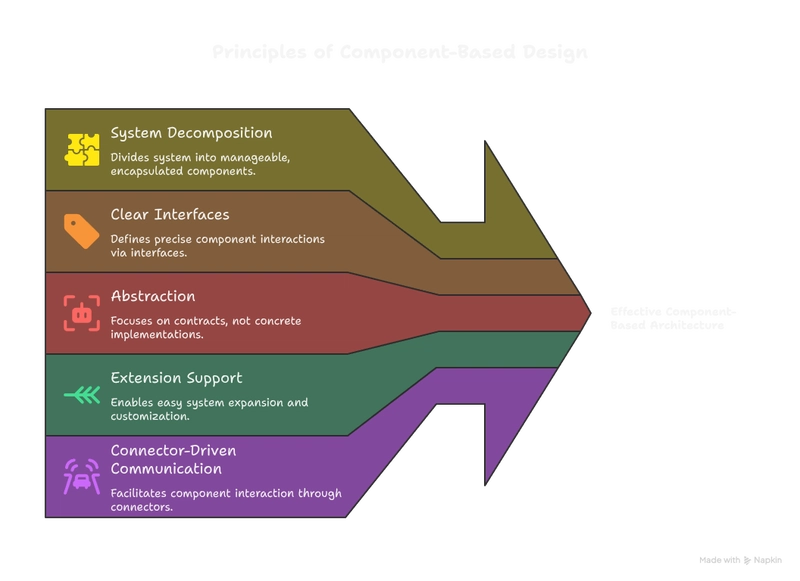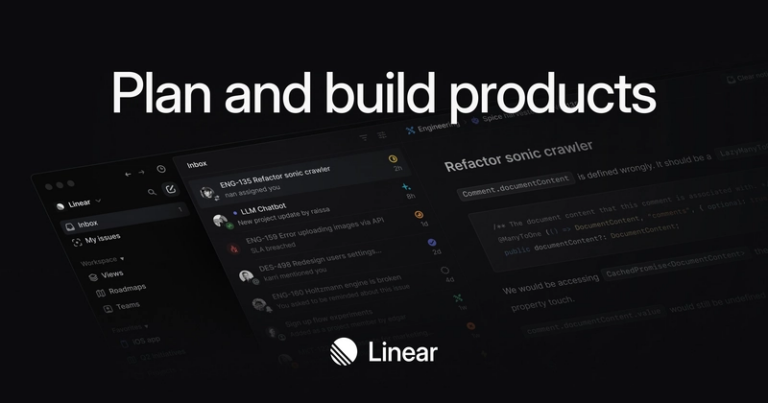Component-Based Design in Software Architecture
Hi there! I’m Maneshwar. Currently, I’m building a private AI code review tool that runs on your LLM key (OpenAI, Gemini, etc.) with flat, no-seat pricing — designed for small teams. Check it out, if that’s your kind of thing.
Component-Based Design in Software Architecture
In modern software development, Component-Based Design (CBD) has emerged as one of the most powerful architectural approaches.
Instead of building monolithic systems, CBD focuses on designing applications by assembling independent, reusable, and well-defined components.
This modular structure allows developers to create flexible, maintainable, and scalable software systems.
What is Component-Based Design?
Component-Based Design is an approach where a system is divided into self-contained components, each responsible for a specific functionality. These components:
- Have a clear interface that defines how they interact with the system.
- Can be developed, tested, and deployed independently.
- Are reusable across different systems and applications.
This makes it easier to maintain software, introduce new features, and adapt to changing requirements without rewriting the entire system.
What is a Component?
A component is a modular, portable, and reusable unit of software functionality. It:
- Encapsulates its implementation details.
- Exposes a well-defined interface for interaction.
- Can be independently deployed and replaced when needed.
Examples include UI elements like buttons, grids, and charts, or backend components such as authentication services, payment processors, or data access layers.
Views of a Component
Components can be understood from different perspectives:
-
Object-Oriented View
A component is seen as a collection of cooperating classes with defined attributes, operations, and interfaces. -
Conventional View
It represents a program module with processing logic, data structures, and an interface to interact with. -
Process-Related View
Focuses on building from existing components maintained in libraries rather than creating from scratch.
Characteristics of Components
Good components share common traits:
- Reusability – usable across multiple applications.
- Replaceability – can be substituted with other compatible components.
- Extensibility – can evolve without breaking existing systems.
- Encapsulation – hides internal implementation details.
- Independence – minimal dependencies on other components.
Principles of Component-Based Design
When designing with components, the following principles guide the architecture:
- Decompose the system into cohesive, encapsulated units.
- Each component has clear interfaces (provided and required ports).
- Abstraction over concrete dependencies – components depend on contracts, not implementations.
- Support for extension and plug-in architectures.
- Connector-driven communication – method calls, messages, events, or streams define how components interact.
This approach results in systems that are flexible, testable, and easier to scale.
Conducting Component-Level Design
A systematic approach ensures effective design:
- Identify domain-specific classes and map them to components.
- Define interfaces and their contracts.
- Describe processing flows with pseudocode or UML diagrams.
- Model data sources and persistence mechanisms.
- Document dependencies and deployment environments.
By focusing on modular design, teams ensure that changes or enhancements do not ripple unnecessarily across the system.
Advantages of Component-Based Architecture
CBD offers several practical benefits:
- Ease of deployment – new versions replace old ones seamlessly.
- Reduced cost – reuse of existing components lowers development effort.
- Faster development – developers build on proven components instead of reinventing.
- Reliability – reusing tested components increases overall system stability.
- Simplified maintenance – updates are localized to specific components.
- Parallel development – independent teams can work on different components simultaneously.
Real-World Examples of Components
- Frontend UI Libraries – React, Angular, and Vue rely on component-based principles.
- Middleware and Services – EJB, CORBA, and .NET components for enterprise applications.
- APIs and Microservices – modern distributed systems leverage components deployed independently.
Conclusion
Component-Based Design transforms software development by emphasizing reuse, modularity, and independence.
By assembling systems from proven components, organizations save time, reduce cost, and build more reliable applications.
Whether in desktop applications, enterprise systems, or modern cloud-based microservices, CBD continues to be a cornerstone of scalable and maintainable software architecture.
LiveReview helps you get great feedback on your PR/MR in a few minutes.
Saves hours on every PR by giving fast, automated first-pass reviews. Helps both junior/senior engineers to go faster.
If you’re tired of waiting for your peer to review your code or are not confident that they’ll provide valid feedback, here’s LiveReview for you.


